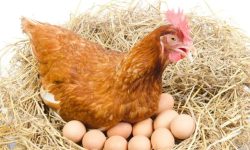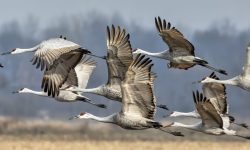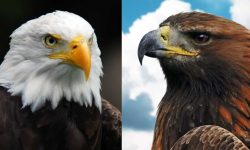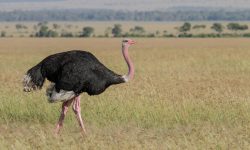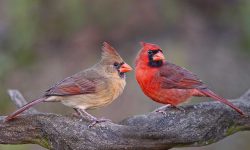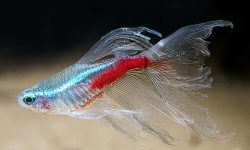Pigeons are among the most familiar birds in urban and rural environments, often seen congregating in flocks. But have you ever wondered what a group of pigeons is called? Like many other birds, pigeons have collective nouns that describe their behavior and social structure.
This article explores the various terms used to refer to a group of pigeons, their significance, and interesting facts about pigeon behavior.
What Is the Collective Noun for Pigeons?
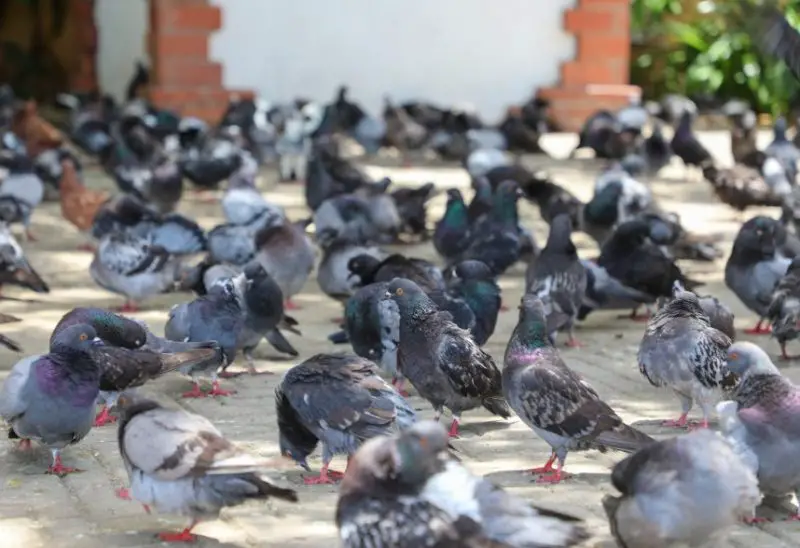
The most commonly used collective noun for a group of pigeons is a “flock.” However, several other terms exist, each with unique usage and context. Let’s explore them in detail:
Flock – The Most Common Term
A flock of pigeons is the standard and most widely recognized term for a group of these birds. This word is used for pigeons in any setting, whether they are foraging on the ground, perched on buildings, or flying together in the sky. The term “flock” applies broadly to many bird species and signifies the social and communal nature of pigeons, which tend to stay in groups for safety and navigation.
Kit – Specific to Homing and Racing Pigeons
A kit of pigeons refers specifically to a trained group of homing or racing pigeons. This term is commonly used among pigeon fanciers and breeders, particularly in competitive pigeon racing and acrobatics. A kit of pigeons is often released together to fly in unison, performing aerial maneuvers before returning to their home loft. The synchronized movement and close formation of a kit make them distinct from a general flock.
Passel – A Rare and Informal Term
The word passel is an informal and less commonly used collective noun for pigeons. It originates from the word “parcel,” meaning a collection of things. A passel of pigeons typically refers to a large, loosely gathered group, often seen congregating in urban areas where food is plentiful. This term is not as widely recognized as “flock” or “kit” but has been used occasionally to describe pigeons en masse.
Flight – When Pigeons Are in the Air
The term flight of pigeons is used when pigeons are actively flying. Unlike “flock,” which can describe pigeons both on the ground and in the air, “flight” specifically emphasizes their movement through the sky. This term is often used by birdwatchers or in poetic descriptions of pigeons taking off in unison, filling the sky with their synchronized wingbeats.
Loft – A Dual Meaning
While loft primarily refers to the structure where pigeons are housed, it is sometimes used to describe a group of pigeons collectively. This term is most common among pigeon keepers and enthusiasts. A loft of pigeons can imply not just the physical shelter but also the birds that belong to it, reinforcing the idea of a bonded community of pigeons living together under one owner’s care.
Each of these collective nouns reflects a different aspect of pigeon behavior, whether in flight, competition, or communal living. While “flock” remains the most universally accepted term, words like “kit,” “passel,” “flight,” and “loft” offer more specific nuances depending on the context.
Understanding Different Collective Nouns for Pigeons
Pigeons are highly social birds, and different collective nouns are used to describe their groupings based on their behavior, location, and purpose. While “flock” is the most common term, several other words—such as kit, passel, flight, and loft—are also used in specific contexts.
Flock of Pigeons
A flock of pigeons is the most widely recognized term used to describe a group of these birds. Whether in urban settings, rural areas, or open skies, pigeons tend to gather in flocks for various reasons, including feeding, socializing, and flying in coordinated patterns. This term applies to both wild and domesticated pigeons.
Why Do Pigeons Form Flocks?
Pigeons are naturally gregarious birds that benefit from staying in groups. Some key reasons for this behavior include:
- Protection: A flock provides better protection against predators. With more eyes scanning the surroundings, pigeons can detect threats quickly and take flight when needed.
- Foraging: Pigeons often share information about abundant food sources. A flock can collectively locate food more efficiently than a single bird.
- Navigation: In flight, pigeons rely on experienced leaders to guide them. This is especially important for homing pigeons that travel long distances.
Flocks of pigeons are a common sight in cities, gathering near food-rich areas such as parks, plazas, and rooftops.
Kit of Pigeons
A kit of pigeons specifically refers to a group of trained homing or racing pigeons that fly together in synchronized patterns. This term is widely used among pigeon fanciers, particularly those involved in pigeon racing and aerial acrobatics.
Characteristics of a Kit of Pigeons
- Synchronized Flight: Kits of pigeons are trained to fly in unison, often performing aerial maneuvers with precision.
- Endurance Training: Racing pigeons in a kit are bred and conditioned for long-distance flights, sometimes covering hundreds of miles.
- Homing Ability: A kit of homing pigeons has an exceptional ability to return to their home loft after being released far away.
The term “kit” is most relevant in pigeon sports, where enthusiasts breed and train pigeons for competitive flight events.
Passel of Pigeons
The word passel is a less common collective noun for pigeons, originating from the term “parcel,” meaning a large collection of things grouped together. While not as widely recognized as “flock” or “kit,” it has been used colloquially in some regions.
When Is “Passel” Used?
- Referring to Large, Disorganized Groups: A passel of pigeons often implies a random, scattered gathering rather than an organized flock.
- Informal Usage: Unlike “flock” or “kit,” which are well-established terms, “passel” is more of a regional or informal term rather than a universally accepted collective noun.
You might hear “passel of pigeons” in conversations or literary works rather than in scientific or pigeon-keeping contexts.
Flight of Pigeons
A flight of pigeons refers to a group of pigeons that are actively flying. This term specifically highlights the motion of pigeons as they take off, soar, and navigate through the air.
Pigeon Flight Patterns
- Strong Fliers: Pigeons are powerful birds, capable of reaching speeds of up to 60 mph (97 km/h).
- Coordinated Movement: When in a flight formation, pigeons maintain synchronized movements, especially when trained.
- Long-Distance Travel: Homing pigeons are known for their ability to travel hundreds of miles to return to their loft.
Birdwatchers and nature enthusiasts often use the term “flight” to describe pigeons in motion, particularly when observing their graceful aerial maneuvers.
Loft of Pigeons
The term loft of pigeons has a dual meaning. Primarily, a loft refers to the physical structure where domesticated pigeons are housed. However, some pigeon breeders and fanciers also use it to collectively refer to the pigeons living within that shelter.
Pigeon Lofts and Their Importance
- Shelter and Safety: A pigeon loft provides protection from predators, harsh weather, and environmental hazards.
- Breeding and Training Hub: Pigeon lofts are essential for breeding and training homing pigeons, ensuring they return to a designated location.
- Home Base for Racing Pigeons: In pigeon sports, a well-maintained loft serves as the primary home to which racing pigeons return after a flight.
While “loft” is not as widely recognized as “flock” in general pigeon discussions, it remains a critical term within the world of pigeon keeping.
The Role of Pigeons in Society and Culture
Pigeons have maintained a strong connection with human civilization for thousands of years. From their role as trusted messengers in wartime to their deep symbolic meanings in various cultures, these birds have influenced history in remarkable ways. Understanding their social behaviors and the collective nouns used to describe them adds another layer of appreciation for their impact on both nature and human society.
Pigeons as Messengers
Homing pigeons have been an essential means of communication throughout history, particularly before modern telecommunication systems were developed. Their ability to navigate across vast distances and return to their home loft with remarkable accuracy made them invaluable for delivering critical messages.
- Ancient Uses: Pigeons were used as messengers as early as ancient Egypt and Rome, where they carried messages between distant locations.
- Military Communication: During World War I and II, homing pigeons played vital roles in delivering messages across enemy lines, often saving lives by ensuring the timely transmission of crucial information.
- Association with “Kit”: The term “kit” is often linked with messenger pigeons because they were trained to fly in coordinated groups, ensuring their effectiveness in delivering messages.
One of the most famous messenger pigeons, Cher Ami, saved nearly 200 soldiers during World War I by delivering a message despite being injured. Such stories highlight the deep historical bond between humans and pigeons.
Pigeons in Religion and Symbolism
Beyond their practical roles, pigeons hold deep spiritual and cultural significance in many traditions. Their gentle nature and ability to find their way home have made them symbols of peace, love, and faith across different religions.
- Christianity: Pigeons, particularly doves, are often associated with the Holy Spirit in Christian traditions. In the Bible, a dove is depicted descending upon Jesus during his baptism, symbolizing divine presence and purity.
- Hinduism and Buddhism: Pigeons are considered sacred in both Hindu and Buddhist traditions. In many regions, feeding pigeons is seen as an act of compassion and good karma, believed to bring blessings and positive energy.
- Ancient Mythology: In Greek and Roman mythology, pigeons were associated with Aphrodite (Venus), the goddess of love, reinforcing their symbolism of romance and devotion.
Today, pigeons continue to symbolize peace and harmony, often depicted in art, literature, and international peace movements. The release of white doves at ceremonies and celebrations remains a powerful tradition representing hope and unity.
Pigeons are more than just city-dwelling birds; they have played pivotal roles in shaping human history, culture, and spiritual beliefs. Whether as messengers, symbols of peace, or participants in sacred traditions, these birds continue to hold a special place in our world.
Fun Facts About Pigeon Behavior
Pigeons are fascinating birds with remarkable intelligence, navigation skills, and a long history of interaction with humans. Their unique behaviors set them apart from many other bird species, making them subjects of scientific study, art, and folklore.
Pigeons Recognize Themselves in Mirrors
Pigeons are one of the few bird species capable of self-recognition, a trait linked to higher cognitive abilities. In experiments, pigeons have demonstrated the ability to recognize their own reflection in a mirror rather than mistaking it for another bird. This ability is typically seen in animals with advanced intelligence, such as great apes, dolphins, and elephants. Scientists use the mirror test to assess self-awareness in animals, and pigeons have successfully passed modified versions of this test, proving their remarkable mental capacity.
Pigeons Can Find Their Way Home From Hundreds of Miles Away
One of the most astonishing abilities of pigeons is their exceptional navigation skills. Homing pigeons can travel hundreds of miles and still find their way back to their lofts with impressive accuracy. They achieve this using a combination of the Earth’s magnetic field, the position of the sun, and familiar visual landmarks.
Studies suggest that pigeons have special magnetoreceptors in their beaks that allow them to detect magnetic fields, helping them orient themselves even when flying over unfamiliar terrain. Their incredible homing instincts have made them valuable in history, especially as messengers in wartime and for long-distance communication before modern technology.
Pigeons Have Been Used in Art and Literature
Pigeons have inspired human creativity for centuries, appearing in ancient paintings, sculptures, literature, and poetry. In classical art, pigeons often symbolize love, peace, and devotion, particularly in depictions of Aphrodite (Venus), the goddess of love, where doves and pigeons are seen accompanying her.
Throughout literature, pigeons have been used as symbols of endurance and loyalty. Writers and poets have drawn inspiration from their homing abilities and their close relationship with humans. In modern times, pigeons continue to be featured in street art, photography, and contemporary poetry, celebrating their resilience and unique place in urban landscapes.
Pigeons are far more than just city birds; they are intelligent, adaptable, and deeply intertwined with human history and culture. Whether recognized for their intelligence, incredible navigation, or artistic influence, these birds continue to amaze and inspire people worldwide.
Conclusion
The collective nouns for pigeons—flock, kit, passel, flight, and loft—each carry specific meanings related to the birds’ behavior and interaction with humans. Whether you see a flock of pigeons in the city or a trained kit of homing pigeons in the countryside, understanding these terms adds depth to our appreciation of these remarkable birds.
Next time you spot a group of pigeons, you’ll know exactly what to call them!

